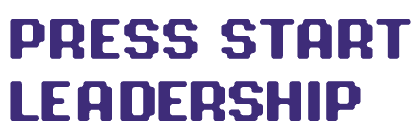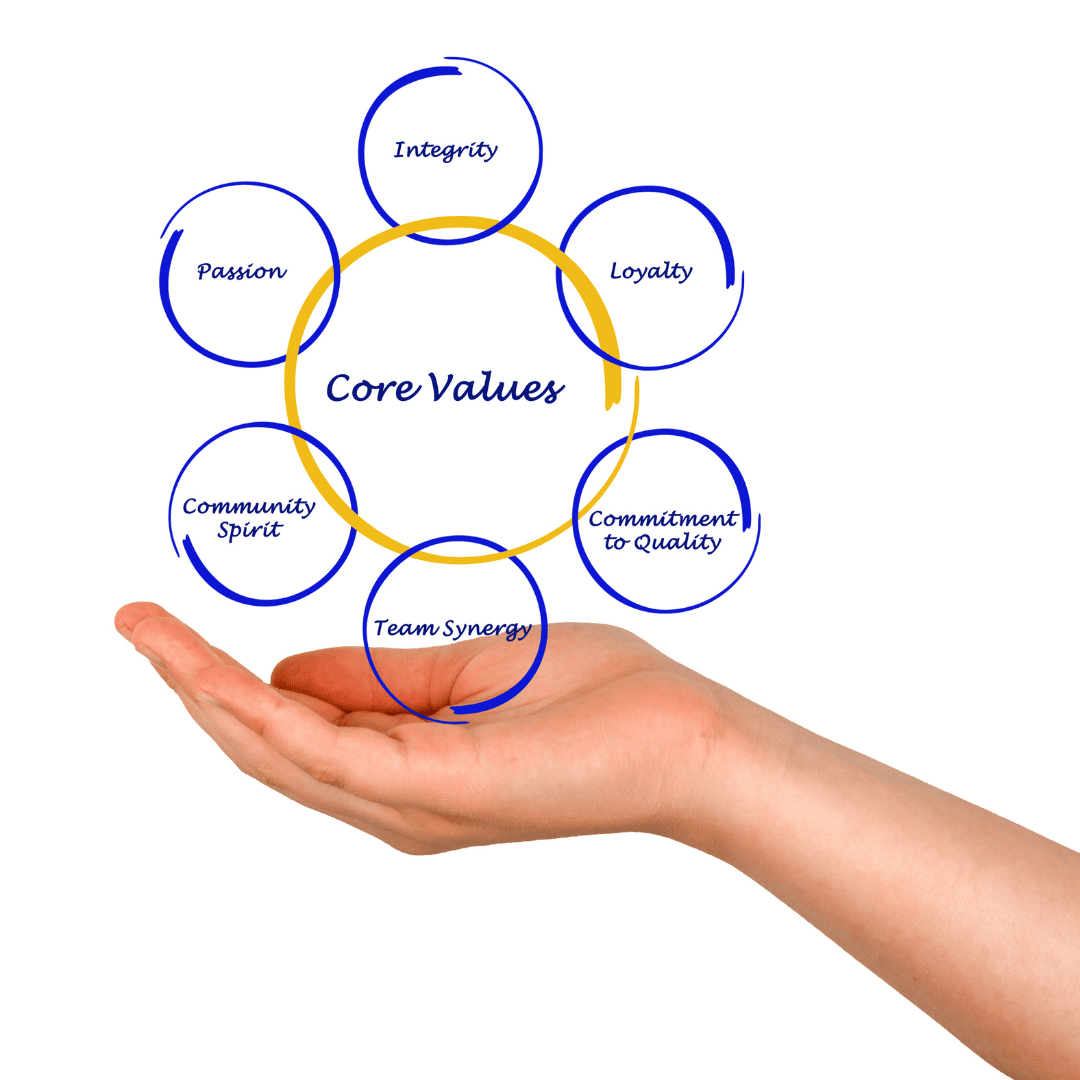Crafting a Compass for Success: Defining and Pursuing Leadership Values and Goals
Leadership is a journey that requires a clear sense of direction. For leaders across industries, including those steering the ship in dynamic sectors like technology, setting foundational values and concrete goals is critical. This comprehensive guide aims to help leaders establish and articulate their leadership values and goals, providing a roadmap for personal and professional growth and effectiveness.
The Importance of Leadership Values
Leadership values are the core principles that guide a leader’s actions, decisions, and interactions. They are the bedrock of a leader’s identity and play a crucial role in shaping organizational culture and performance.
Defining Leadership Values: Leadership values are deeply held beliefs that guide your behavior and decision-making process. They serve as a moral compass, helping you navigate complex situations and stay true to your vision.
Impact of Leadership Values on Organizations: Your leadership values profoundly impact your team and organization. They influence everything from how you handle conflicts and challenges to how you motivate and inspire your team.
Identifying and Articulating Your Leadership Values
The process of identifying personal leadership values is introspective and requires a deep understanding of one’s beliefs, experiences, and aspirations.
Self-reflection and Assessment: Engage in self-reflection to understand what truly matters to you. Consider past experiences, both successes and failures, and identify the values that have guided your decisions.
Clearly Articulating Your Values: Once identified, articulate your leadership values clearly. This can involve writing a leadership philosophy statement that encapsulates your core values and serves as a guide for your actions.
Setting Leadership Goals
Setting leadership goals is about defining what you want to achieve in your leadership role. These goals should be aligned with your values and the broader objectives of your organization.
Establishing Clear and Measurable Goals: Your leadership goals should be specific, measurable, achievable, relevant, and time-bound (SMART). This clarity helps in tracking progress and achieving the desired outcomes.
Aligning Goals with Organizational Objectives: Ensure that your leadership goals are aligned with the overall objectives of your organization. This alignment ensures that your efforts contribute to the broader mission and vision of the organization.
Integrating Values and Goals into Leadership Practice
Integrating your values and goals into your daily leadership practice is essential for authentic and effective leadership.
Leading by Example: Embody your leadership values in your everyday actions. Your behavior sets the tone for your team and organization, and living your values fosters trust and respect.
Goal-oriented Leadership: Stay focused on your leadership goals, and use them to guide your decisions and actions. Regularly review these goals and adjust your strategies to stay on course.
Communicating Your Leadership Values and Goals
Effectively communicating your values and goals to your team is crucial for building alignment and fostering a shared vision.
Transparent Communication: Be transparent about your leadership values and goals. Share them with your team and explain why they are important to you and how they impact the organization.
Encouraging Open Dialogue: Create an environment where open dialogue is encouraged. Invite your team to discuss and provide feedback on your leadership approach, values, and goals.
Building a Culture Based on Leadership Values
A leader plays a pivotal role in shaping organizational culture. A culture that reflects your leadership values can enhance team cohesion, motivation, and performance.
Cultivating a Value-Driven Culture: Actively work towards cultivating a culture that embodies your leadership values. This can involve setting policies, practices, and traditions that reflect and reinforce these values.
Leading Cultural Change: If your leadership values necessitate a cultural shift within the organization, approach this change strategically. Engage your team in the process and lead the change through example and consistent reinforcement.
Measuring Progress Towards Leadership Goals
Measuring your progress towards your leadership goals is essential for continuous improvement.
Setting Up Metrics for Evaluation: Establish clear metrics to evaluate your progress towards your leadership goals. These could include feedback from team members, performance metrics, or personal reflection and assessment.
Regular Review and Adjustment: Conduct regular reviews of your progress. Be open to adjusting your goals and strategies as needed based on these reviews and changing circumstances.
Overcoming Challenges in Upholding Leadership Values and Goals
Leaders often face challenges in staying true to their values and achieving their goals. Overcoming these challenges requires resilience and adaptability.
Identifying and Addressing Challenges: Be proactive in identifying challenges that may hinder your ability to uphold your values and achieve your goals. These could range from external pressures to internal conflicts.
Strategies for Overcoming Challenges: Develop strategies to overcome these challenges. This might involve seeking mentorship, engaging in professional development, or revisiting and refining your approach.
Sustaining Leadership Growth
Ongoing personal and professional development is essential for any leader. Sustaining growth means continuously refining your leadership approach and adapting to new challenges and opportunities.
Commitment to Continuous Learning: Embrace a mindset of lifelong learning. Stay informed about industry trends, leadership theories, and best practices. Engage in professional development opportunities, such as workshops, seminars, and conferences.
Reflective Leadership Practice: Regularly reflect on your leadership practice. Assess what is working well and what areas need improvement. Reflective practice is a powerful tool for personal growth and development.
Fostering Team Development in Line with Leadership Style
Your team’s development should align with your leadership style and values. By investing in your team’s growth, you not only enhance their capabilities but also strengthen the organization’s overall performance.
Identifying Team Development Needs: Assess the development needs of your team. This could involve skill-building, leadership development, or improving collaboration and communication.
Providing Opportunities for Growth: Provide your team with opportunities for growth that align with your leadership values and goals. This could include mentoring programs, training sessions, or cross-functional project opportunities.
Leveraging Feedback for Leadership Improvement
Feedback is an invaluable tool for any leader. Constructive feedback, both given and received, can provide insights that are essential for continuous improvement.
Seeking Constructive Feedback: Actively seek feedback from your peers, superiors, and team members. Use this feedback to gain different perspectives on your leadership style and effectiveness.
Creating a Feedback Culture: Foster a culture where feedback is regularly exchanged and valued. Encourage open and honest communication within your team, and demonstrate how feedback can lead to positive changes and growth.
Balancing Personal Well-being with Professional Responsibilities
Leadership roles often come with high levels of responsibility and stress. Balancing personal well-being with professional duties is key to long-term leadership effectiveness and personal health.
Prioritizing Self-care: Make self-care a priority. Ensure that you are taking care of your physical, mental, and emotional health. This might involve regular exercise, mindfulness practices, or pursuing hobbies and interests outside of work.
Setting Boundaries: Set clear boundaries between work and personal life. This helps in preventing burnout and ensures that you have the time and energy to recharge and engage in activities that you enjoy.
Leading Through Change and Uncertainty
The ability to lead effectively through change and uncertainty is a critical skill for any leader. In the ever-evolving landscape of business and technology, adaptability and resilience are key.
Embracing Change: View change as an opportunity rather than a challenge. Lead by example in adapting to new situations and guide your team through transitions with a positive and proactive approach.
Building Resilience: Cultivate resilience, both in yourself and your team. Develop strategies to manage stress and recover from setbacks. Resilience is fundamental for navigating the uncertainties of the business world.
Measuring the Impact of Your Leadership
Understanding the impact of your leadership on your team and the organization is important for gauging your effectiveness and identifying areas for improvement.
Assessing Leadership Impact: Regularly assess how your leadership is impacting team performance, morale, and overall organizational goals. Use a combination of performance metrics, employee feedback, and self-assessment.
Adjusting Leadership Strategies: Be prepared to adjust your leadership strategies based on the outcomes of your assessments. Continuous improvement should be your goal, adapting your approach as needed to meet the evolving needs of your team and organization.
Final Thoughts:
Setting and maintaining clear leadership values and goals are essential for effective leadership. By committing to continuous learning, fostering team development, seeking and utilizing feedback, maintaining personal well-being, and leading adaptively through change, leaders can ensure they are equipped to guide their teams to success.
As a leader, your journey is one of constant evolution. Embrace these strategies to enhance your leadership capabilities, drive your team forward, and achieve sustained success in your professional endeavors.
Thank you for reading this article to the end. I hope it has been informative and helpful. If you’d like to learn more about the topics we covered, I invite you to check out my podcast and my YouTube channel where I delve into these subjects in more depth.
Additionally, I would love to stay in touch and keep you updated on all the latest developments and insights in the world of leadership. That’s why I encourage you to sign up for my newsletter. Not only will you receive regular updates, but as a thank you for joining, I will also send you my free eBook, “5 Heroic Leadership Skills.” This eBook is packed with practical tips and strategies that will help you take your leadership skills to the next level.
So don’t wait! Sign up for my newsletter today and start your journey towards becoming a more effective and inspiring leader. I can’t wait to hear from you.
Work With Me!
If you’re on the quest to elevate your team’s leadership, production, or game design capabilities, I’m here to assist! Leveraging extensive experience and a strategic approach, I offer personalized audits, bespoke workshops, and leadership retreat facilitation to drive your team toward excellence. My commitment is to provide efficient, reliable, and proven support, ensuring you have the tools and insights needed to thrive. Ready to unlock your team’s full potential and achieve unparalleled success? Don’t hesitate—Press Start on your journey to transformation today! Feel free to reach out directly to discuss how we can tailor a solution to meet your unique needs and goals. Let’s connect and take your team’s performance to the next level!
🔗 www.pressstartleadership.com
📧 contact@pressstartleadership.com


